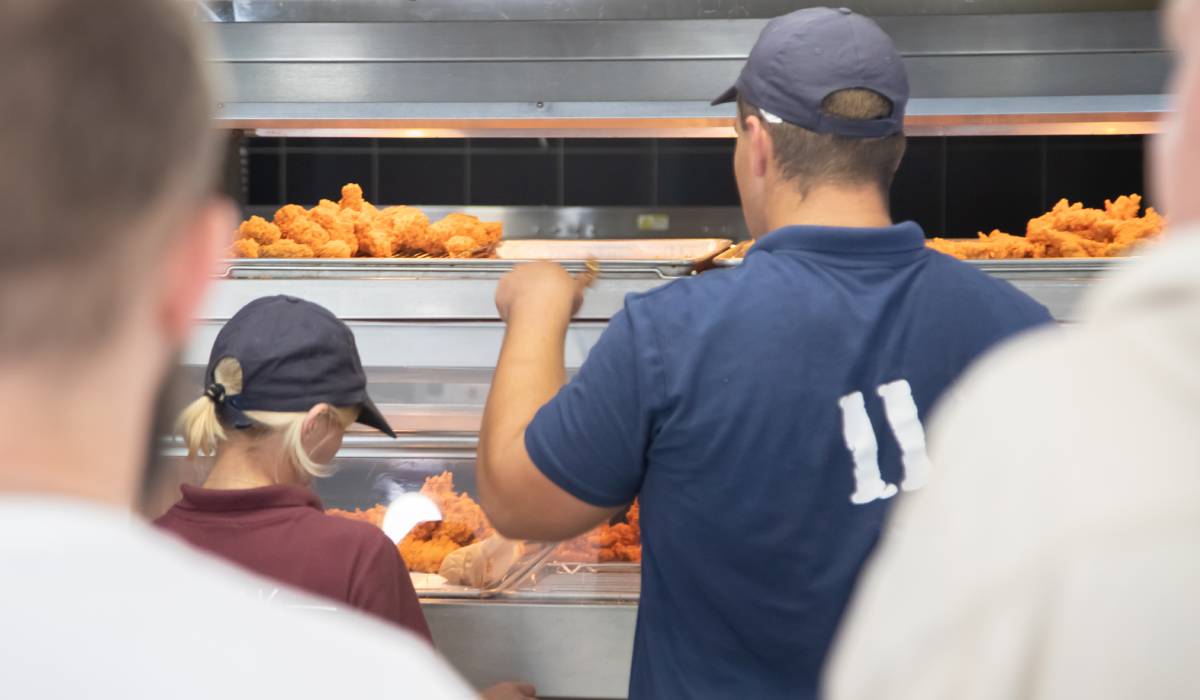Editor’s note: This is the fourth article in a series where we’ll ask Courtney Leyes and Emily Litzinger, employment lawyers at Fisher Phillips, employment law questions specific to the restaurant industry. The first, on hiring minors, can be found here. The second, on how to accommodate pregnant and breastfeeding employees, can be found here. The third, on whether or not to tip pool, is here.
Under the Fair Labor Standards Act (FLSA), employers are permitted to claim a tip credit, which allows them to pay employees a direct cash wage of less than the federal (or applicable state) minimum wage and rely upon tips provided by customers to make up the required minimum payment. But, over the last decade, the U.S. Department of Labor (USDOL) has progressively narrowed the use of tip credits and has made several public statements hinting that the practice is disfavored and will likely be eliminated entirely.
The last few years have seen much activity in this area. USDOL issued a rule that took effect in November 2021 that expanded the agency’s authority to assess penalties against employers who violate the tip provisions of the FLSA. The USDOL also clarified when managers and supervisors may receive and retain tips. Then it issued a second rule, effective December 2021, that reinstated—and complicated—the notorious “80/20” Rule, amended the FLSA’s tip provisions regarding when restaurants with tipped employees may take a tip credit, and modified the definition of work that is considered part of a tipped occupation. Needless to say, the laws and rules surrounding the use of tip credits are constantly changing, and even though you may think you are complying with the latest developments, below are some common mistakes hospitality employers often inadvertently make, and some tips to avoid them.
No. 1: Not Providing a Tip Credit Notice. The only way you will lose the tip credit carte blanche is if you do not provide your tipped employees for whom you are taking a tip credit specific notice. The FLSA requires you to provide notice of the following to your tipped employees before you take the tip credit: (One) the amount of the direct (or cash) wage you are paying a tipped employee, which must be at least $2.13 per hour under the FLSA; (two) the additional amount claimed by you as a tip credit, which cannot exceed $5.12 (the difference between the minimum required direct (or cash) wage of $2.13 and the current minimum wage of $7.25); (three) that the tip credit claimed by you cannot exceed the amount of tips actually received by the tipped employee; (four) that all tips received by the tipped employee are to be retained by the employee except for a valid tip pooling arrangement limited to employees who customarily and regularly receive tips; and (five) that the tip credit will not apply to any tipped employee unless the employee has been informed of these tip credit provisions. While this notice can be provided orally, we recommend it be given in writing and have each tipped employee acknowledge the notice so you have a record that it was given.
No. 2: Not Calculating the Overtime Rate Properly. Many employers pay tipped employees who are paid $2.13 per hour at an overtime rate of $3.20 (or 1.5 times $2.13). This is not correct. Under the federal FLSA, you can at most take $5.12 in a tip credit, so the correct overtime rate for those whom you are paying $2.13 per hour is $5.75, which is 1.5 times the minimum wage ($7.25), less $5.12. You can adjust this calculation if you are taking less of a tip credit but remember you can at most take $5.12 in a tip credit from the overtime rate of $10.88.
No. 3: Not Keeping Proper Records. Employers that take a tip credit must keep records of: (one) those employees for whom you are taking a tip credit; (two) the weekly or monthly amount reported by the employee, to you, of tips received; (three) the amount by which the wages of each tipped employee have been deemed to be increased by tips as determined by you; (four) for dual role employees, hours worked each workday in any occupation in which the employee does not receive tips, and total daily or weekly straight-time payment made by the employer for such hours; and (five) hours worked each workday in occupations in which the employee receives tips, and total daily or weekly straight-time earnings for such hours. If you are not maintaining these records, you could be faced with a recordkeeping violation if ever audited by the DOL.
No. 4: Not Making Up the Difference in Minimum Wage. The reason why employers must require employees to provide the tips they receive (and do so accurately) is because the employer must make up the difference between the direct (or cash) wage payment (which must be at least $2.13 per hour) and the minimum wage in each workweek, if their tips do not make up the difference. For instance, if an employee works 20 hours but only makes $40 in tips, you will owe that employee and additional $62.40. (The math: The employee would be owed $145, or 20-hours times $7.25. $145 less $42.60—$2.13 times 20 hours—less $40 in tips equals $62.40.) You must make up the difference at the regular payday for the period in which the workweek ends. An additional reminder to be mindful of the overtime calculations discussed above when determining whether you owe your tipped employees in overtime weeks.
No. 5: Not Including any Service Charges and/or “Auto Grats” in the Hourly Rate. Under the FLSA, compulsory charges for service and automatic gratuities are not considered tips. Because these service charges and/or “auto grats” are not considered tips, you can use these to satisfy your minimum wage and overtime pay obligations under the FLSA for those tipped employees who receive service charges and/or “auto grats.” Additionally, because these sums are part of the employee’s total compensation, they must be included in the regular rate of pay for computing overtime.
No. 6: Taking any Deductions for Uniforms, Register Shortages, etc. You cannot deduct from the pay of any tipped employee for whom you are taking a tip credit for reasons like uniforms, register shortages, etc. (Deductions for health insurance and taxes are OK.) If you do deduct for uniforms or a cash shortage, you would be cutting into the employee’s minimum wage, which is prohibited by the FLSA.
No. 7: Mixing Your Tip Pool. In an effort to spread the wealth and create a more customer focused environment, many employers have created mixed tip pools that allow back-of-house employees—such as cooks and dishwashers who are not traditionally tipped employees—to share in the tips received by front-of-house employees, such as servers and bartenders.
This generous effort, however, is not without its potential landmines. While federal law allows mixed tip pools, each participant must receive at least the minimum wage. That means employers cannot utilize the tip credit for the servers and other traditionally tipped employees if they are sharing in the pool with non-tipped employees (back-of-house).
If you have a mixed tip pool (with BOH and FOH), make sure everyone is paid at least minimum wage. Otherwise, limit the tip pool to only tipped employees like servers and bartenders. You should also check the applicable state law, as some states have stricter rules and very specific requirements for tip pooling.
Do you feel seen? If any of these issues hit a little too close to home, we recommend performing an audit of your pay and time practices with your trusted legal counsel, so that if any issues are discovered, your communications will be privileged and confidential.
Courtney Leyes and Emily Litzinger are employment lawyers at Fisher Phillips where they regularly partner with restaurant industry clients to minimize liability and reduce risk with preventative strategies focused on compliance, training, and the implementation of best practices. Having both worked in the industry, they understand the delicate balance restaurant employers face when managing a diverse and ever-changing workforce in today’s complex legal landscape.











